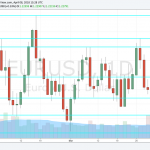For all the talk of quantitative tightening, it turns out global central banks actually accumulated reserves in the second quarter.
The specter of “QT” haunts market on a near daily basis and because the post-crisis expansion of developed market central bank balance sheets has no real historical analog, it’s by definition impossible to know what the market impact will be as the Fed, the ECB and the BoJ attempt to normalize their holdings.
Critics charge that fears of central bank balance sheet rundown are overblown. “Correlation doesn’t equal causation”, skeptics will say, as it relates to charts that plot CB balance sheet holdings with the inexorable ascent of benchmark equity indices and the steady grind tighter in credit spreads.
Those critics are being deliberately obtuse. The stated purpose of ultra-accommodative monetary policy is to engineer global reflation via the fabled wealth effect, so far from being a “conspiracy theory”, the notion that ZIRP, NIRP, and QE inflate the value of financial assets is actually a stated policy aim.
Of course, when you talk about “QT”, you can’t just confine the discussion to developed market CB balance sheets. You also have to take into account EM FX reserves and, in the same vein, accumulation of reserve assets by oil exporters who have recently enjoyed higher prices for their cash crop (if you will).
That brings me neatly to a new note from BofAML. “At first sight, the recent release of Q2 foreign exchange reserves data by the IMF indicates a small decline in global FX holdings from $11.6trn in Q1 to $11.5trn in Q2”, the bank writes, in a note dated October 8, referencing the following chart.

(BofAML)
But that might be misleading. “Contrary to what the outright headline number would suggest, we find that central banks were probably net buyers of reserve assets through Q2”, the bank continues, before explaining as follows:














Leave A Comment